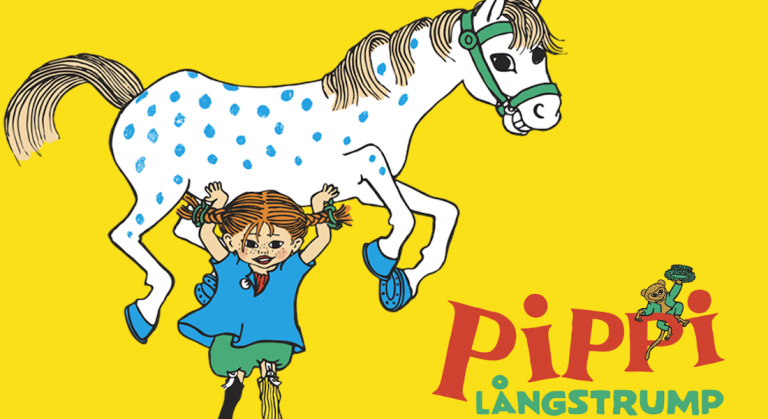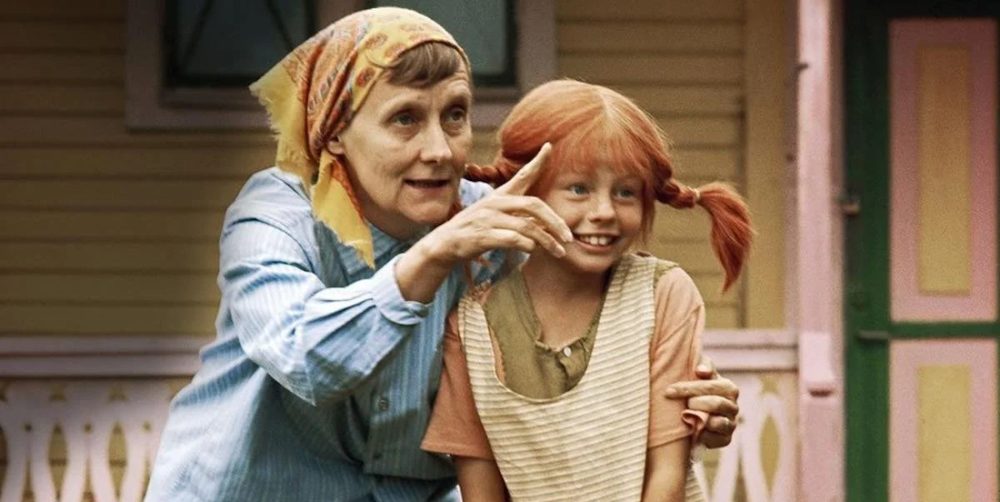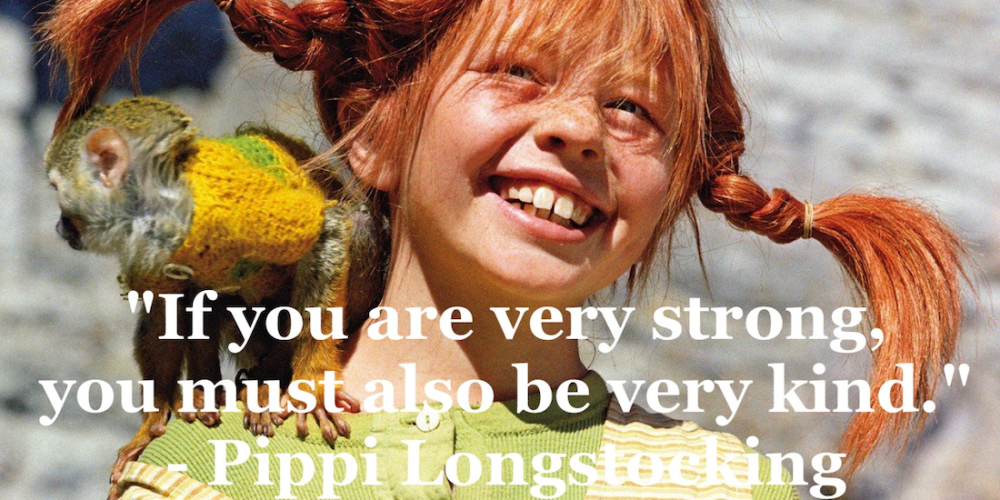
In Sweden and beyond, Pippi’s status as a lesbian icon and gay pride symbol reflects her universal appeal.

New York, N.Y. – In the vibrant tapestry of global literature, few characters shine as brightly or as subversively as Pippi Långstrump, the freckle-faced, red-haired protagonist created by Swedish author Astrid Lindgren in 1941.
Known for her superhuman strength, suitcase full of gold, and fiercely independent spirit, Pippi has transcended her origins as a children’s book character to become a cultural touchstone, particularly within Sweden’s LGBTQ+ community. Her defiance of gender norms and societal expectations has cemented her status as a lesbian icon and a symbol of gay pride, a legacy that continues to resonate decades after her creation.
“There was a complete emptiness in children’s culture in Germany after the war.
When all the Nazi books and culture had been thrown away, there was a vacuum,
and then Pippi came and filled it up.” – Astrid Lindgren
A Rebellious Spirit Born in 1941
Pippi Långstrump first burst onto the literary scene in 1941, when Astrid Lindgren, then a young mother, crafted the character to entertain her daughter during an illness.

With her mismatched stockings, boundless confidence, and a life free from adult supervision, Pippi was unlike any character in children’s literature at the time.
Living alone in Villa Villekulla with her horse and monkey, she embodied a radical independence that challenged the rigid gender roles of mid-20th-century Sweden.
Her strength—both physical and emotional—allowed her to lift horses, outwit burglars, and defy authority, making her a figure of fascination and empowerment.
Pippi’s subversive nature was not just a product of her adventures but of her very existence. She rejected the domesticity expected of girls, opting instead for a life of adventure and self-reliance.
This resonated deeply with readers who felt constrained by societal norms, particularly within the LGBTQ+ community.
By 1998, her cultural significance was formally recognized when EuroPride, a major European LGBTQ+ event, declared her a gay icon, celebrating her as a symbol of freedom and nonconformity.

A Beacon for Gender Nonconformity
Pippi’s appeal as a lesbian icon stems from her blatant disregard for traditional gender expectations. In the 1940s, when women were often confined to roles as homemakers, Pippi’s life was a bold counterpoint. She lived alone, managed her own finances (thanks to her suitcase of gold), and rejected the trappings of conventional femininity.
Her androgynous appearance—cropped hair, practical clothing, and a devil-may-care attitude—further aligned her with gender-nonconforming identities. For many in Sweden’s LGBTQ+ community, Pippi represented a vision of life unbound by societal constraints, a powerful message for those navigating their own identities in a conservative society.
This resonance was not accidental. Astrid Lindgren’s storytelling often pushed against the status quo. Her other works, such as Ronja Rövardotter, featured a similarly gender-nonconforming female protagonist who lived outside societal norms, forging her own path in a fantastical forest.
Mio, Min Mio, another of Lindgren’s stories, depicted a tender, emotionally rich relationship between two boys, which many readers interpreted as having queer undertones. These narratives, while subtle, offered representation at a time when queer stories were rarely told, let alone celebrated.

Conservative Backlash and Cultural Impact
Pippi’s unconventionality did not go unnoticed by Sweden’s conservative factions, particularly Christian groups. From the 1940s through the 1990s, critics argued that Pippi promoted a culture of immaturity, moral corruption, and self-centeredness.
They claimed her rejection of authority—seen in her disdain for school, traditional family structures, and “normal” behavior—encouraged rebellion and undermined societal order.

These critiques often centered on her influence on young readers, particularly girls, whom conservatives feared would emulate her defiance.
Astrid Lindgren dismissed these criticisms as “silly,” emphasizing the positive impact Pippi had on her audience.
In interviews, she recounted how countless girls and women credited Pippi with inspiring them to embrace their strength and individuality.
This empowerment extended beyond Sweden, as Pippi’s stories were translated into dozens of languages, reaching readers worldwide.
Her influence was particularly profound in the LGBTQ+ community, where her rejection of gender norms and celebration of personal freedom resonated as a call to authenticity.
Pippi’s legacy as a queer icon was further amplified by her use in educational contexts. Louise Hartung, a German lesbian educator and close friend of Lindgren, incorporated Pippi into her work in post-war Germany.
Hartung, who was openly in love with Lindgren, used Pippi’s stories to promote values of independence and resilience in her efforts to denazify German education systems. This application of Pippi’s character underscored her role as a symbol of liberation, not just for women but for anyone marginalized by rigid societal structures.

Astrid Lindgren’s Enigmatic Persona
While Astrid Lindgren’s own sexuality remains a subject of speculation, her life and work provided ample fodder for discussion. Married with children, Lindgren presented herself androgynously, often wearing practical clothing and sporting a short haircut that defied the feminine ideals of her time.
Her close friendship with Louise Hartung, which spanned decades, was marked by deep emotional intimacy and mutual admiration. Hartung’s letters to Lindgren reveal a profound affection, with the educator praising Pippi as a transformative figure in literature and education.
Though Lindgren never publicly identified as queer, her stories and persona invited interpretation. The queer elements in her works—Pippi’s gender nonconformity, Ronja’s wild independence, the tender bonds in Mio, Min Mio—suggest a sensitivity to marginalized identities.
Whether intentional or not, these elements made her a beloved figure among LGBTQ+ readers, who saw in her characters a reflection of their own struggles and triumphs.
A Lasting Symbol of Freedom
Today, Pippi Långstrump remains a vibrant symbol of resistance and self-expression. Her stories, adapted into numerous films, television series, and even a 1997 animated series beloved by many, continue to captivate audiences.

The Swedish version of the animated series, with its catchy theme song and vivid animation, evokes nostalgia for those who grew up with Pippi’s adventures “l2A9r6iZWso.”
In Sweden and beyond, Pippi’s status as a lesbian icon and gay pride symbol reflects her universal appeal.
She represents not just strength but the courage to defy expectations, to live boldly in a world that often demands conformity.
For the LGBTQ+ community, she is a reminder that icons can emerge from the most unexpected places—a children’s book, a rebellious girl, a suitcase full of gold.
As Astrid Lindgren herself might have said, Pippi’s power lies in her ability to inspire, to empower, and to remind us all that true strength comes from being unapologetically oneself.
Pippi Långstrump (Longstocking): A Swedish Queer Icon Endures (Aug. 7, 2025)
Summary for Audio Recording
Pippi Långstrump, created by Astrid Lindgren in 1941, is a Swedish literary icon and a symbol of gender nonconformity. Celebrated as a lesbian icon and gay pride symbol, Pippi’s defiance of societal norms resonated with the LGBTQ+ community. Despite conservative criticism, her stories empowered generations, with Lindgren’s own androgynous persona and queer-coded works like Ronja Rövardotter adding to her legacy. Pippi remains a timeless figure of freedom and authenticity.
#LGBTQHistory #PippiLongstocking #AstridLindgren #QueerIcons #GenderNonconformity #SwedishLiterature #GayPride #EuroPride
Tags: Pippi Långstrump, Astrid Lindgren, LGBTQ+, gay pride, lesbian icon,
gender nonconformity, Swedish literature, EuroPride, Ronja Rövardotter, Mio Min Mio
